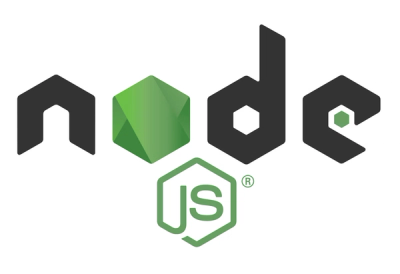
Security News
Django Joins curl in Pushing Back on AI Slop Security Reports
Django has updated its security policies to reject AI-generated vulnerability reports that include fabricated or unverifiable content.
react-digraph
Advanced tools

A React component which makes it easy to create a directed graph editor without implementing any of the SVG drawing or event handling logic.
npm install --save react-digraph
The default export is a component called 'GraphView'; it provides a multitude of hooks for various graph editing operations and a set of controls for zooming. Typically, it should be wrapped in a higher order component that supplies various callbacks (onCreateNode, onCreateEdge etc...).
All nodes and edges can have a type attribute set - nodes also support a subtype attribute. These can be passed to GraphView via the nodeTypes, nodeSubtypes, and edgeTypes props. GraphView will look up the corresponding SVG elements for the node's type/subtype and the edge's type and draw it accordingly.
It is often convenient to combine these types into a configuration object that can be referred to elsewhere in the application and used to associate events fired from nodes/edges in the graphView with other actions in the application. Here is an abbreviated example:
import GraphView from 'react-digraph'
const GraphConfig = {
NodeTypes: {
empty: {
typeText: "None",
shapeId: "#empty",
shape: (
<symbol viewBox="0 0 100 100" id="empty" key="0">
<circle cx="50" cy="50" r="45"></circle>
</symbol>
)
}
},
NodeSubtypes: {},
EdgeTypes: {
emptyEdge: {
shapeId: "#emptyEdge",
shape: (
<symbol viewBox="0 0 50 50" id="emptyEdge" key="0">
<circle cx="25" cy="25" r="8" fill="currentColor"> </circle>
</symbol>
)
}
}
}
const EMPTY_TYPE = "empty" // Text on empty nodes is positioned differently
const NODE_KEY = "id" // Allows D3 to correctly update DOM
class Graph extends Component {
constructor(props) {
super(props);
this.state = {
graph: sample,
selected: {}
}
}
/* Define custom graph editing methods here */
render() {
const nodes = this.state.graph.nodes;
const edges = this.state.graph.edges;
const selected = this.state.selected;
const NodeTypes = GraphConfig.NodeTypes;
const NodeSubtypes = GraphConfig.NodeSubtypes;
const EdgeTypes = GraphConfig.EdgeTypes;
return (
<div id='graph' style={styles.graph}>
<GraphView ref='GraphView'
nodeKey={NODE_KEY}
emptyType={EMPTY_TYPE}
nodes={nodes}
edges={edges}
selected={selected}
nodeTypes={NodeTypes}
nodeSubtypes={NodeSubtypes}
edgeTypes={EdgeTypes}
getViewNode={this.getViewNode}
onSelectNode={this.onSelectNode}
onCreateNode={this.onCreateNode}
onUpdateNode={this.onUpdateNode}
onDeleteNode={this.onDeleteNode}
onSelectEdge={this.onSelectEdge}
onCreateEdge={this.onCreateEdge}
onSwapEdge={this.onSwapEdge}
onDeleteEdge={this.onDeleteEdge}/>
</div>
);
}
}
A typical graph that would be stored in the Graph component's state looks something like this:
{
"nodes": [
{
"id": 1,
"title": "Node A",
"x": 258.3976135253906,
"y": 331.9783248901367,
"type": "empty"
},
{
"id": 2,
"title": "Node B",
"x": 593.9393920898438,
"y": 260.6060791015625,
"type": "empty"
},
{
"id": 3,
"title": "Node C",
"x": 237.5757598876953,
"y": 61.81818389892578,
"type": "empty"
},
{
"id": 4,
"title": "Node C",
"x": 600.5757598876953,
"y": 600.81818389892578,
"type": "empty"
}
],
"edges": [
{
"source": 1,
"target": 2,
"type": "emptyEdge"
},
{
"source": 2,
"target": 4,
"type": "emptyEdge"
}
]
}
For a detailed example, check out src/examples/graph.js. To run the example:
npm install
npm run example
go to localhost:8000.
All props are detailed below.
| Prop | Type | Required | Notes |
|---|---|---|---|
| primary | string | false | Primary color. |
| light | string | false | Light color. |
| dark | string | false | Dark color. |
| style | object | false | Style prop for wrapper. |
| nodeKey | string | true | Key for D3 to update nodes(typ. UUID). |
| emptyType | string | true | 'Default' node type. |
| nodes | array | true | Array of graph nodes. |
| edges | array | true | Array of graph edges. |
| readOnly | bool | false | Disables all graph editing interactions. |
| enableFocus | bool | false | Adds a 'focus' toggle state to GraphView. |
| selected | object | true | The currently selected graph entity. |
| nodeTypes | object | true | Config object of available node types. |
| nodeSubtypes | object | true | Config object of available node subtypes. |
| edgeTypes | object | true | Config object of available edge types. |
| getViewNode | func | true | Node getter. |
| onSelectNode | func | true | Called when a node is selected. |
| onCreateNode | func | true | Called when a node is created. |
| onUpdateNode | func | true | Called when a node is moved. |
| canDeleteNode | func | false | Called before a node is deleted. |
| onDeleteNode | func | true | Called when a node is deleted. |
| onSelectEdge | func | true | Called when an edge is selected. |
| canCreateEdge | func | false | Called before an edge is created. |
| onCreateEdge | func | true | Called when an edge is created. |
| onSwapEdge | func | true | Called when an edge 'target' is swapped. |
| canDeleteEdge | func | false | Called before an edge is deleted. |
| onDeleteEdge | func | true | Called when an edge is deleted. |
FAQs
directed graph react component
The npm package react-digraph receives a total of 3,905 weekly downloads. As such, react-digraph popularity was classified as popular.
We found that react-digraph demonstrated a not healthy version release cadence and project activity because the last version was released a year ago. It has 9 open source maintainers collaborating on the project.
Did you know?

Socket for GitHub automatically highlights issues in each pull request and monitors the health of all your open source dependencies. Discover the contents of your packages and block harmful activity before you install or update your dependencies.

Security News
Django has updated its security policies to reject AI-generated vulnerability reports that include fabricated or unverifiable content.

Security News
ECMAScript 2025 introduces Iterator Helpers, Set methods, JSON modules, and more in its latest spec update approved by Ecma in June 2025.

Security News
A new Node.js homepage button linking to paid support for EOL versions has sparked a heated discussion among contributors and the wider community.